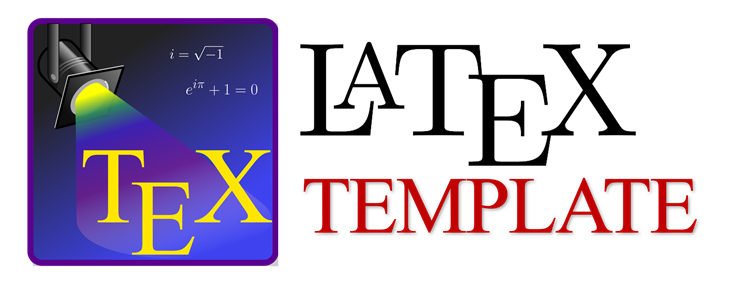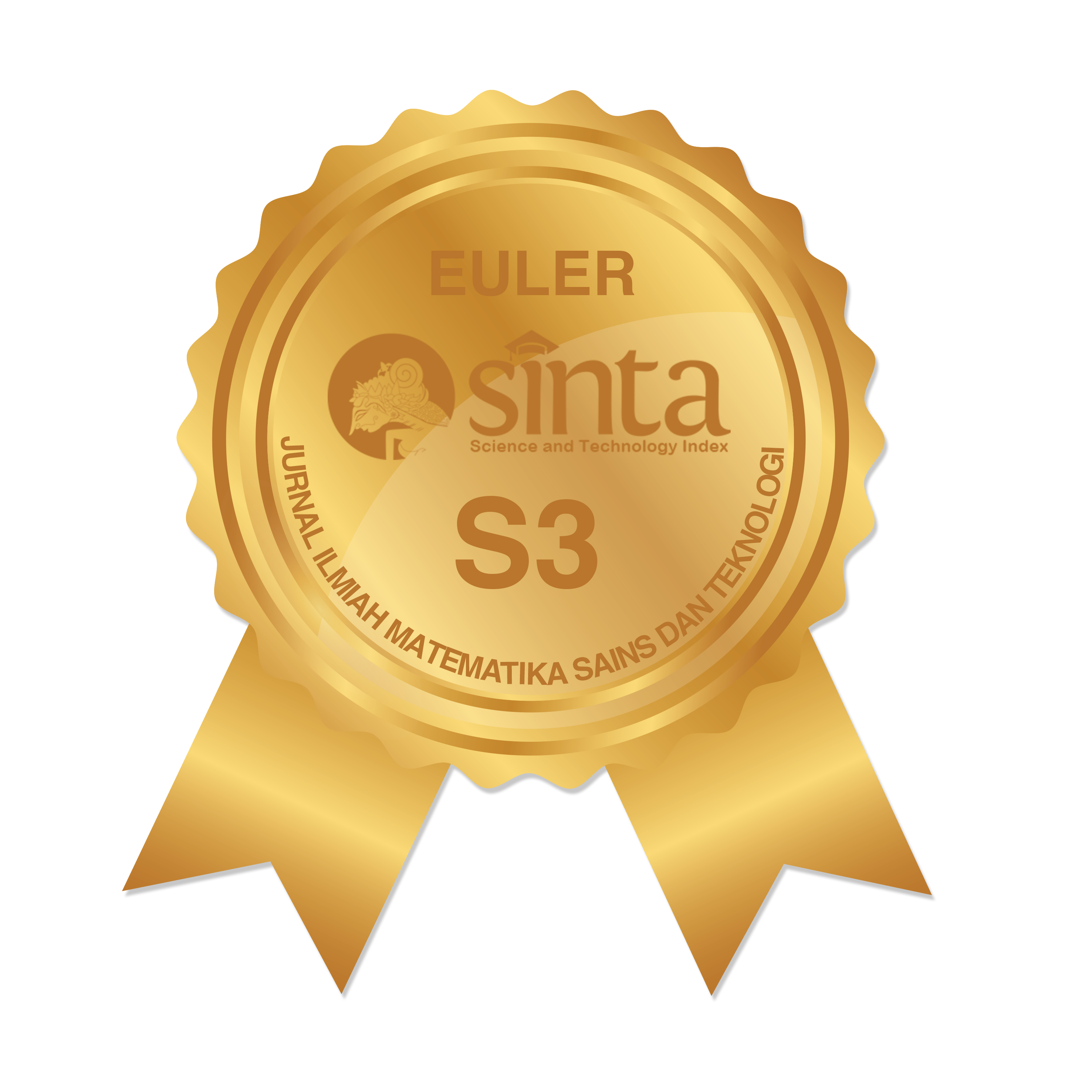Prediction of Protein Content and Glycemic Index of Local Food-Based Snack Bars Using Lagrange Polynomial Interpolation
Abstract
Snack bars have the potential to serve as a healthy and nutritious snack alternative. One of the key factors to consider in the development of snack bars is their protein content and glycemic index. These two attributes can be predicted using the Lagrange polynomial interpolation method. In this study, predictions were carried out using Lagrange polynomial interpolation of orders 1, 2, 3, 4, and 5. The research began with the preparation of 11 snack bar formulations, followed by measurements of their protein content and glycemic index. The obtained data were then divided into two groups: the first group was used as test points for the Lagrange polynomial interpolation process, and the second group served as a benchmark for comparing the interpolation prediction results. The predicted results from the Lagrange polynomial interpolation were compared with the actual data, and the prediction accuracy was evaluated using the NRMSE value. The results showed that Lagrange polynomial interpolation of orders 1, 2, 3, 4, and 5 was effective in predicting the protein content and glycemic index of the snack bars. Furthermore, the NRMSE values indicated that second-order Lagrange interpolation provided the highest prediction accuracy, with the smallest NRMSE values: 0.08244 for protein content prediction and 0.06798 for glycemic index prediction.
Keywords
Full Text:
PDFReferences
World Health Organization and Food Agriculture Organization of the United Nations, Protein and Amino Acid Requirements in Human Nutrition : Report of a Joint WHO/FAO/UNU Expert Consultation. Geneva, Switzerland: World Health Organization, 2007.
D. J. Jenkins et al., “Glycemic Index: Overview of Implications in Health and Disease,” Am J Clin Nutr, vol. 76, no. 1, pp. 266S-273S, Jul. 2002, doi: 10.1093/ajcn/76/1.266s.
A. S. Gerrano, A. Moalafi, H. A. Seepe, S. Amoo, and H. Shimelis, “Nutritional and Phytochemical Compositions and Their Interrelationship in Succulent Pods of Pigeonpea (Cajanus cajan [L.] Millsp.),” Heliyon, vol. 8, no. 3, Mar. 2022, doi: 10.1016/j.heliyon.2022.e09078.
R. L. Burden and J. D. Faires, Numerical Analysis, 9th ed. Boston, MA: Brooks/Cole, Cengage Learning, 2011.
F. A. Pangruruk, S. P. Barus, and B. Siregar, “Peramalan Harga Saham Tutup dengan Metode Interpolasi Polinom Lagrange,” in VARIANSI, 2020, pp. 118–126.
F. A. Pangruruk and S. P. Barus, “Prediksi Harga Saham Menggunakan Metode Interpolasi Polinomi Lagrange,” in Seminar Nasional Matematika dan Pendidikan Matematika, 2016, pp. 1–8.
F. A. Pangruruk and S. P. Barus, “Prediksi Harga Saham dengan Interpolasi Polinom Newton Gregory Maju,” in KNPMP, 2018, pp. 644–650.
F. A. Pangruruk and S. P. Barus, “Prediksi Harga Saham Menggunakan Metode Interpolasi Polinom Newton Gregory Mundur,” in Seminar Nasional Matematika dan Pendidikan Matematika, 2018, pp. 24–29.
A. E. S. H. Maharani, D. A. Azka, and Darlena, “Gold Price Fluctuation Forecasting Based on Newton and Lagrange Polynomial Interpolation,” Jurnal Varian, vol. 7, no. 1, pp. 95–106, Oct. 2023, doi: 10.30812/varian.v7i1.3230.
R. Pratama, R. H. Sianipar, and I. K. Wiryajati, “Pengaplikasian Metode Interpolasi dan Ekstrapolasi Lagrange, Chebyshev dan Spline Kubik untuk Memprediksi Angka Pengangguran di Indonesia,” Dielektrika, vol. 1, no. 2, pp. 116–121, 2014.
R. U. Hurit and M. Y. Nanga, “Penerapan Metode Interpolasi Lagrange dalam Memprediksi Jumlah Penduduk Provinsi Nusa Tenggara Timur,” Jurnal Matematika dan Pendidikan Matematika, vol. 6, no. 1, pp. 57–62, Apr. 2022, doi: 10.15548/mej.v6i1.2608.
G. A. Pratiwi, A. I. Jaya, and R. Ratianingsih, “Aplikasi Metode Polinom Newton Gregory Maju dan Polinom Newton Gregory Mundur dalam Memprediksi Banyaknya Penduduk Sulawesi Tengah,” Jurnal Ilmiah Matematika dan Terapan, vol. 12, no. 2, pp. 152–158, Dec. 2017, doi: 10.22487/2540766x.2017.v14.i2.9018.
F. Fahmi and Karpen, “Penerapan Metode Interpolasi Untuk Proyeksi Pertumbuhan Penduduk di Provinsi Riau,” SATIN - Sains dan Teknologi Informasi, vol. 4, no. 1, pp. 11–19, 2018, doi: 10.33372/stn.v4i1.296.
H. R. P. Negara, M. Ibrahim, and K. R. A. Kurniawati, “Mathematical Model of Growth in The Number of Students in NTB Using Newton-Gregory Polynomial Method,” Jurnal Varian, vol. 4, no. 1, pp. 43–50, Oct. 2020, doi: 10.30812/varian.v4i1.850.
S. C. Lie, S. T. G. Kaunang, and S. D. S. Karouw, “Optimasi Tarif Angkutan Umum di Kota Ambon dengan Metode Interpolasi Polinomial Newton,” Jurnal Teknik Elektro dan Komputer, vol. 3, no. 2, pp. 79–85, 2014.
R. L. Islami and P. R. Sihombing, “Interpolasi Curah Hujan Ekstrim Menggunakan Model Spatial di Provinsi Jawa Barat,” Jurnal Aplikasi Statistika dan Komputasi Statistik, vol. 13, no. 2, pp. 15–22, 2021, doi: 10.34123/jurnalasks.v13i2.290.
R. Yang and B. Xing, “A Comparison of the Performance of Different Interpolation Methods in Replicating Rainfall Magnitudes under Different Climatic Conditions in Chongqing Province (China),” Atmosphere (Basel), vol. 12, no. 10, pp. 1–24, Oct. 2021, doi: 10.3390/atmos12101318.
S. Sima and M. Tajrishy, “Developing Water Quality Maps of a Hyper-saline Lake using Spatial Interpolation Methods,” Scientia Iranica, vol. 22, no. 1, pp. 30–46, Oct. 2015, [Online]. Available: www.scientiairanica.com
B. Erfianto and A. H. Setiawan, “Interpolasi Cubic Spline untuk Memetakan Distribusi Panas pada Permukaan Panel Sel Surya,” ELKOMIKA: Jurnal Teknik Energi Elektrik, Teknik Telekomunikasi, & Teknik Elektronika, vol. 8, no. 3, pp. 467–476, Sep. 2020, doi: 10.26760/elkomika.v8i3.467.
M. Keshtkar, H. Heidari, N. Moazzeni, and H. Azadi, “Analysis of Changes In Air Pollution Quality and Impact of COVID-19 on Environmental Health in Iran: Application of Interpolation Models and Spatial Autocorrelation,” Environmental Science and Pollution Research, vol. 29, no. 25, pp. 38505–38526, May 2022, doi: 10.1007/s11356-021-17955-9.
S. W. Jung et al., “Association by Spatial Interpolation between Ozone Levels and Lung Function of Residents at an Industrial Complex in South Korea,” Int J Environ Res Public Health, vol. 13, no. 7, Jul. 2016, doi: 10.3390/ijerph13070728.
S. Aripin and N. A. Hasibuan, “Penerapan Metode Interpolasi Linier dan Metode Adaptive Median Filter untuk Perbaikan Kualitas Citra pada Hasil CCTV,” in Seminar Nasional Riset Information Science , 2019, p. 854.
K. D. Hartomo, “Implementasi Metode Interpolasi Linier untuk Pembesaran Resolusi Citra,” TEKNOIN, vol. 11, no. 3, pp. 219–232, Sep. 2006, doi: 10.20885/teknoin.vol11.iss3.art5.
Juliati, “Implementasi Interpolasi Spline untuk Meningkatkan Kualitas Skala Zooming pada Citra Screen Capture CCTV,” Journal of Computer System and Informatics (JoSYC), vol. 1, no. 3, pp. 218–224, May 2020.
H. A. Pratama and M. Sam’an, “Implementasi Metode Interpolasi Bilinear Untuk Perbesaran Skala Citra,” Jurnal Komputer dan Teknologi Informasi, vol. 1, no. 1, pp. 21–25, Jan. 2023, doi: 10.26714/.v1i1.11803.
A. Setyono and S. Novianto, “Penerapan Interpolasi Linier untuk Deteksi Garis Lurus pada Citra Gambar,” Techno.COM, vol. 12, no. 3, pp. 143–149, 2013, doi: 10.62411.
D. Thera, S. H. Sitorus, and D. M. Midyanti, “Penerapan Metode Interpolasi Linear dan Histogram Equalization untuk Perbesaran dan Perbaikan Citra,” Jurnal Komputer dan Aplikasi, vol. 08, no. 01, pp. 34–43, 2020, doi: 10.26418/coding.v8i1.39191.
Lina and K. Anthony, “Komparasi Metode Interpolasi untuk Sistem Pengenalan Sel Darah Putih,” Journal of Technology Information, vol. 5, no. 1, pp. 31–36, Jun. 2019, doi: 10.37365/jti.v5i1.56.
M. Julian, L. Ambarwati, and Y. Mahatma, “Penentuan Derajat Optimum Interpolasi pada Metode Lagrange dan Metode Newton Gregory dalam Mengestimasi Kasus Pasien Sembuh dari Covid-19 di Indonesia,” JMT : Jurnal Matematika dan Terapan, vol. 4, no. 1, pp. 11–18, Feb. 2022, doi: 10.21009/jmt.4.1.2.
R. Aulia, A. R. Sazlin, L. Ismayani, M. Sukiman, H. R. P. Negara, and K. R. A. Kurniawati, “Implementasi Interpolasi Newton Gregory pada Model Matematika Penyebaran Virus Corona di Indonesia,” Jurnal Pemikiran dan Penelitian Pendidikan Matematika, vol. 3, no. 1, pp. 1–16, May 2020, doi: 10.36765/jp3m.v3i1.214.
F. A. Pangruruk and S. P. Barus, “Prediksi Jumlah Orang Terpapar Covid-19 Menggunakan Metode Interpolasi Lagrange,” Jurnal KIP, vol. 11, no. 1, pp. 1–12, Jun. 2022, doi: 10.47178/jkip.v11i1.1476.
T. Yulianto, N. I. Ulfaniyah, and R. Amalia, “Peramalan HIV Menggunakan Interpolasi Lagrange,” Zeta-Math Journal, vol. 2, no. 1, pp. 18–21, May 2016, doi: 10.31102/zeta.v2i1.
R. Munir, Metode Numerik. Bandung: Informatika, 2013.
AOAC International, Official Methods of Analysis of AOAC INTERNATIONAL, 22nd ed. New York: Oxford University Press, 2023. doi: 10.1093/9780197610145.001.0001.
C. Kc, Y. Li, C. Jt, and J.-T. Cheng, “Merit of Incremental Area under the Curve (iAUC) in Nutrition is Varied in Pharmacological Assay-A Review,” Clin J Dia Care Control, vol. 2018, no. 2, p. 180008, 2018, doi: 10.4172/2155.
DOI: https://doi.org/10.37905/euler.v13i2.31845
Refbacks
- There are currently no refbacks.
Copyright (c) 2025 Lingga Gita Dwikasari, Satrijo Saloko, Dody Handito, Riezka Zuhriatika Rasyda, Eko Basuki

This work is licensed under a Creative Commons Attribution-NonCommercial 4.0 International License.
Euler : Jurnal Ilmiah Matematika, Sains dan Teknologi has been indexed by:
EDITORIAL OFFICE OF EULER : JURNAL ILMIAH MATEMATIKA, SAINS, DAN TEKNOLOGI |
 | Department of Mathematics, Faculty of Mathematics and Natural Science, Universitas Negeri Gorontalo Jl. Prof. Dr. Ing. B. J. Habibie, Tilongkabila, Kabupaten Bone Bolango 96554, Gorontalo, Indonesia |
 | Email: [email protected] |
 | +6287777-586462 (WhatsApp Only) |
 | Euler : Jurnal Ilmiah Matematika, Sains dan Teknologi (p-ISSN: 2087-9393 | e-ISSN:2776-3706) by Department of Mathematics Universitas Negeri Gorontalo is licensed under a Creative Commons Attribution-NonCommercial 4.0 International License. Powered by Public Knowledge Project OJS. |














